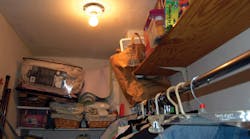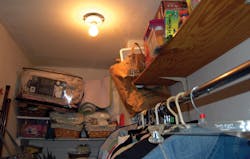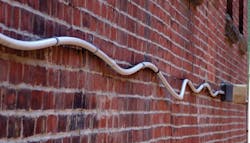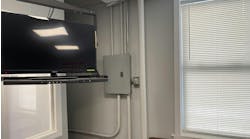How well do you know the Code? Think you can spot violations the original installer either ignored or couldn’t identify? Here’s your chance to moonlight as an electrical inspector and second-guess someone else’s work from the safety of your living room or office. Can you identify the Code violation(s) in this photo? Note: Submitted comments must include specific references from the 2011 NEC.
Hint: It’s getting a little warm in here.
‘Tell Them What They’ve Won...’
Using the 2011 NEC, correctly identify the Code violation(s) in this month’s photo — in 200 words or less — and you could win a $50 gift check. E-mail your response, including your name and mailing address, to [email protected], and Russ will select three winners (excluding manufacturers and prior winners) at random from the correct submissions. Note that submissions without an address will not be eligible to win.
March Winners
No, it’s not a sine wave or even a flexible cord. This is actually PVC conduit that has expanded and contracted so much that it now looks like a droopy flexible cord.
Our winners this month, Robert E. Chellew, an electrical instructor for Bay Area Electrical Apprenticeship in Clearwater, Fla.; Frederick Mertz, an electrical inspector for the City of Bristol, Conn.; and Michael Beanland, a registered professional engineer with TriAxis Engineering, Inc. in Vancouver, Wash., all knew this run of PVC pipe needed an expansion fitting and more clips.
One of the major concerns when installing long runs of PVC is the amount of length change that can happen due to thermal expansion and contraction. For example, according to Table 352.44 a 100-ft-long run of PVC exposed to a temperature change of approximately 100°F will experience a change in length of about 4 in. Sec. 352.44 requires expansion fittings to be used where the length change in a straight run of PVC installed between securely mounted items is expected to be ¼ in. or greater. If an expansion fitting is not used, as was the case for the installation in this photo, then the PVC will start to bend, buckle, twist, and turn until it eventually self destructs.
Another contributing factor to this self destruction is the lack of supports. Table 352.30 requires PVC sized 1 in. and smaller to be supported every 3 ft.






